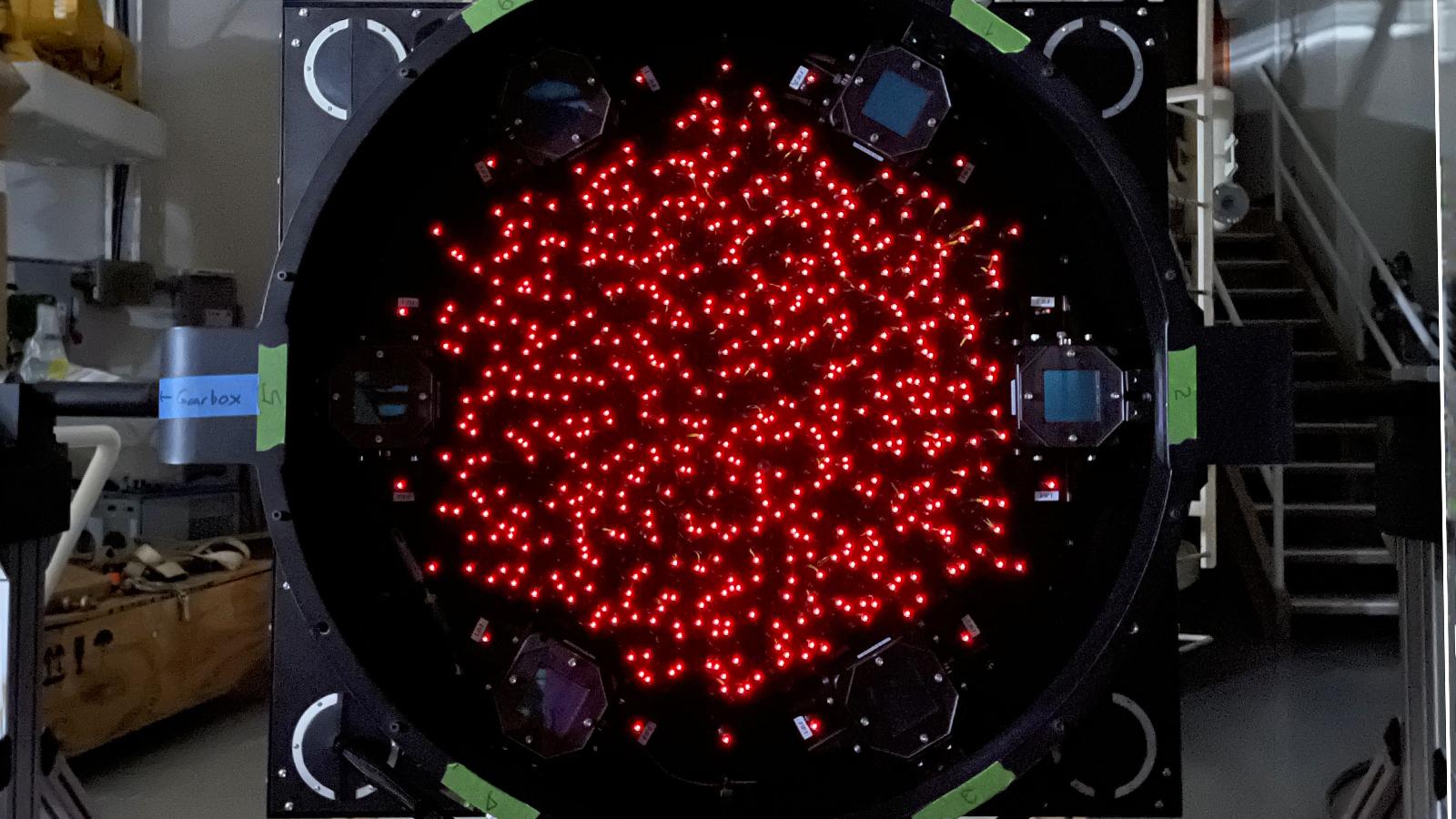The Ohio State Astronomy Department's Imaging Sciences Laboratory (ISL) is a leader in the design and construction of advanced astronomical instrumentation for ground-based optical/infrared astronomy. Since 1986, we have designed, built, and deployed 30 instruments and subsystems at observatories on 5 continents, the majority of which are still operational and scientifically productive. Our instrument experience spans the entire range of ground-based facilities from small purpose-built telescope systems (<0.5m) to facility instruments and sub-systems for one of the largest telescopes in operation (the twin 8.4-m LBT).
Personnel
The ISL consists of 7 full-time staff which are supplemented by staff or postdoc positions supported by research grants for large projects. These core staff work with faculty in the Department of Astronomy to lead and develop instrument programs. They are supported by, and mentor, undergraduate engineering and astronomy majors (typically 3-4 students) and graduate students (typically 1-2 students). You can find a current list of members of the ISL on the people page.
Approach
Because we have a permanent full-time staff with experience spanning more than three decades, we have developed a stable engineering culture with a deep reuse heritage. Our approach to instrument design includes thorough analysis, functional modularity, and a tradition of relentless prototyping to ensure that systems are “right by design” to reduce operational risk. This has allowed us to design and build facility-class instruments with long operational lifetimes that incorporate modern systems and human factors engineering practices related to safety, handling, and maintenance. Most of our instruments have seen 10 to 20 years of science operations, and are more often retired for programmatic rather than technical reasons. You can find a full list of our current and previous instruments on the Instruments and Projects page.
The ISL has a strong mentoring tradition and a collegial work environment where everyone has a voice in design decisions. We regularly cross-train each other, giving us a strong team spirit that takes great pride in our work. The result is that we have developed a solid international reputation as a small university instrumentation group that performs at a very high level disproportionate to its size. Our engineering culture has also been highly adaptable, allowing us to change our operating model from its origins as a PI-driven 100% in-house operation to better adapt to the current environment in which many instrumentation opportunities involve large multi-institution international collaborations. We now increasingly employ industrial solutions and fabrication methods and have adopted professional project management and systems engineering practices that enable us to take on leading roles in large international projects despite our relatively small size.
What is astronomical instrumentation?
Astronomical instrumentation is a branch of astronomy which develops and builds instruments to be installed on telescopes to study the night sky. These range from cameras (similar to those in a cell phone - but often more specialized and advanced), to spectrographs which spread light from stars and other objects in the universe into its constituent colors. Astronomical instrument projects can range in size and scope depending on the science question they are trying to understand - think of them as being a science experiment designed to make measurements of the universe.
Instrumentation projects can take many forms. Whether a project is demonstrating new technologies in a laboratory so that they can be used at telescopes in the future, or designing, building and delivering complex instruments to telescopes which will push the boundaries of our knowledge, instrumentation is a team effort by scientists and engineers working together to deliver a successful instrument.

